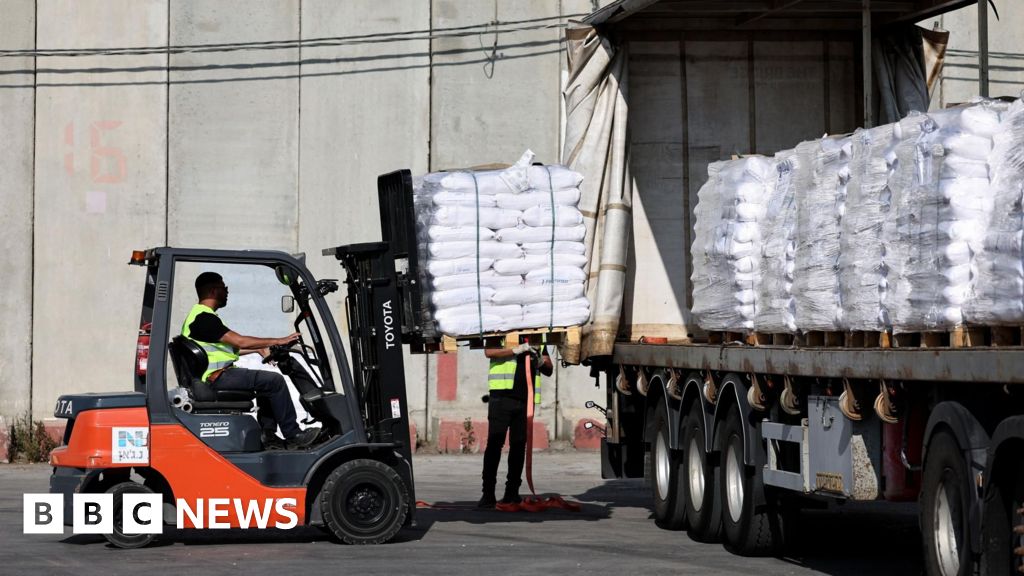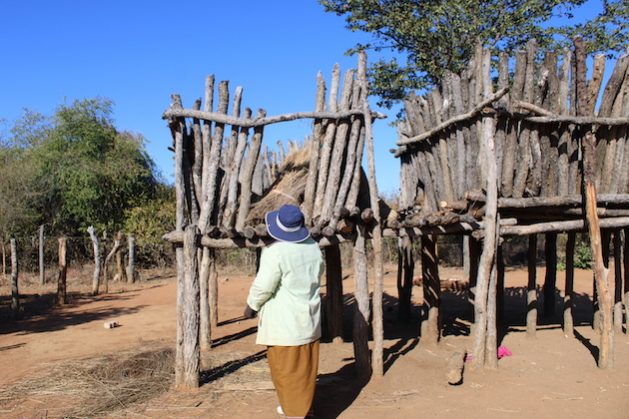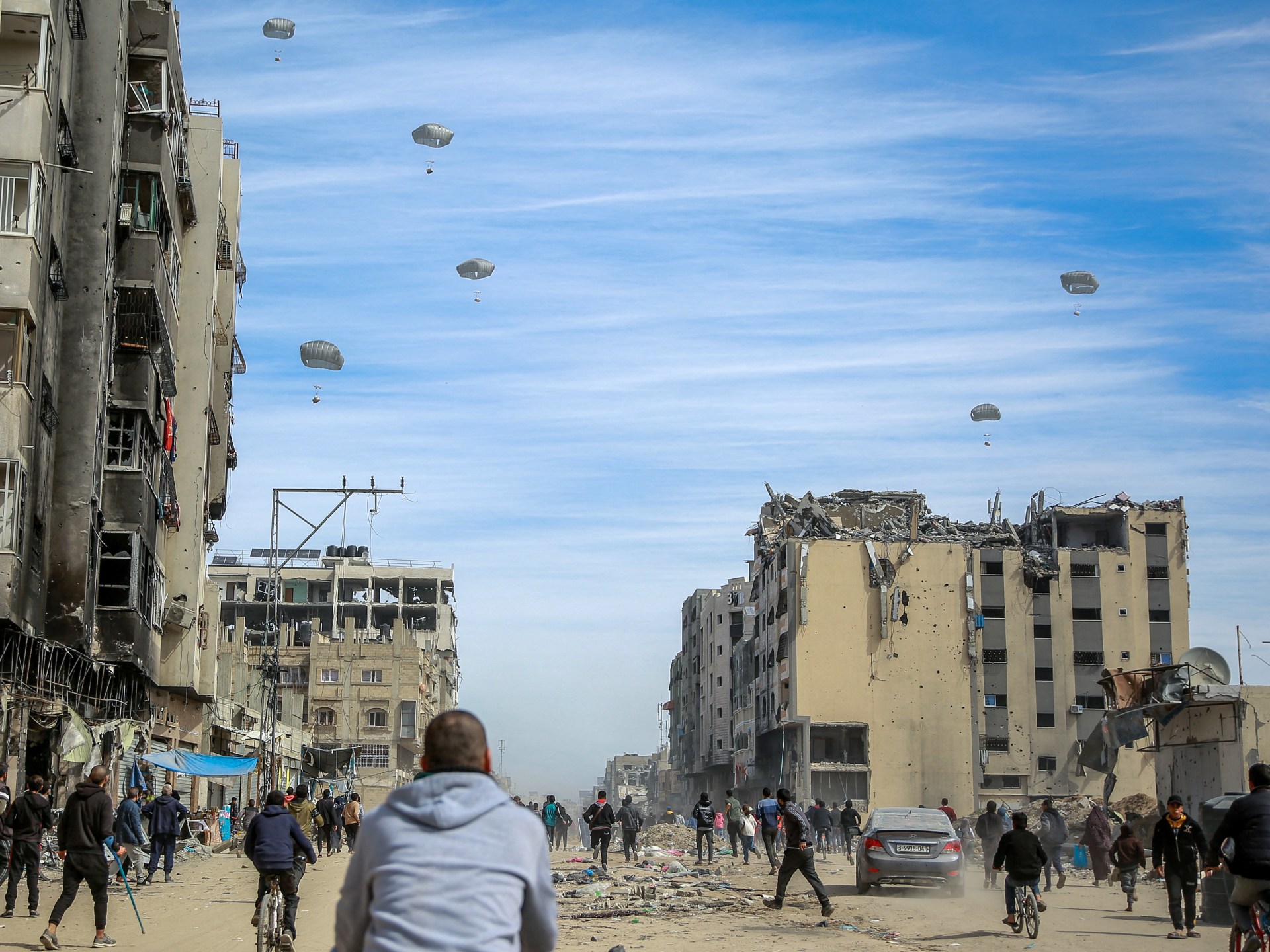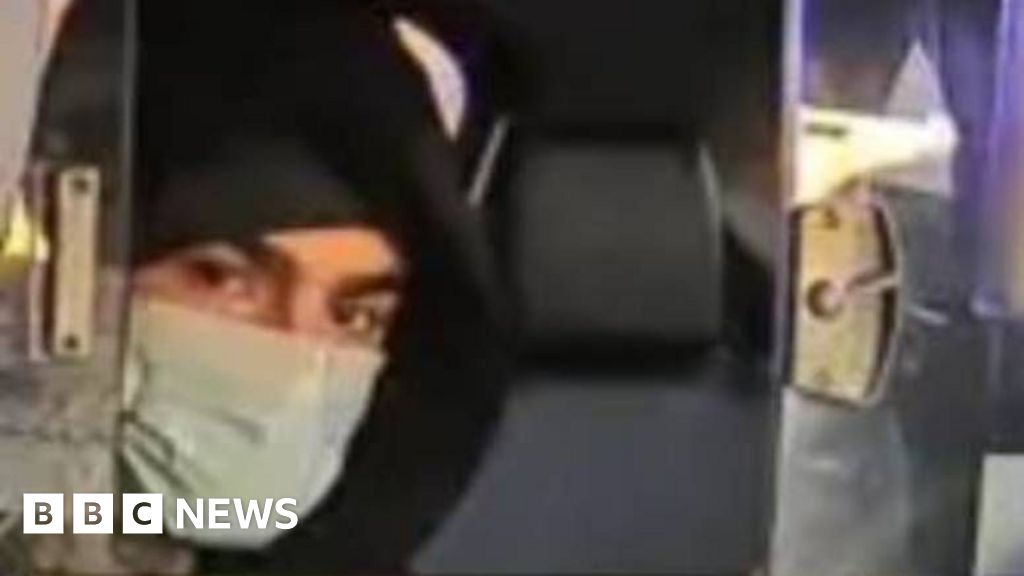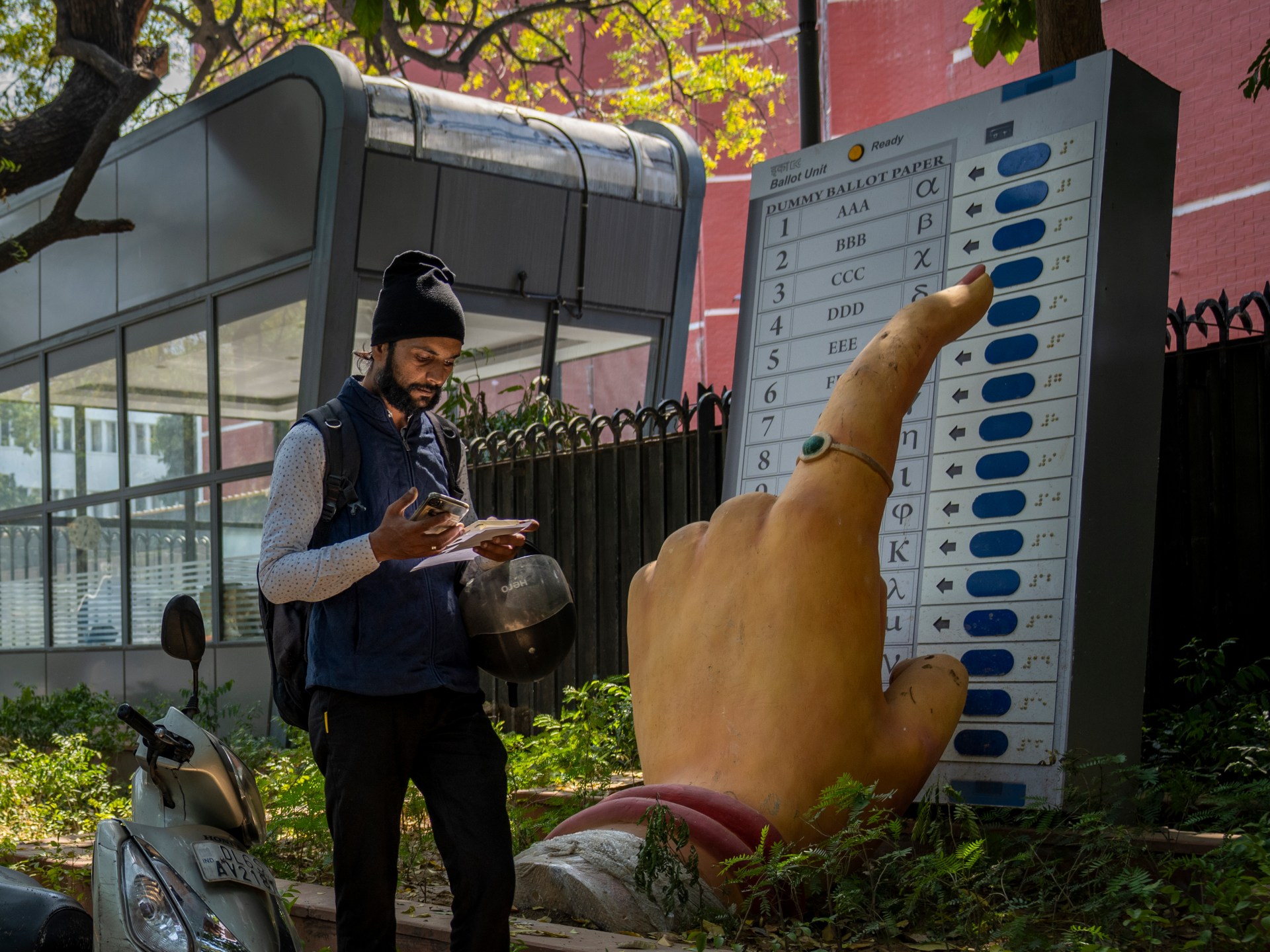UN says 90 lorry loads of aid now in Gaza after delay at crossing
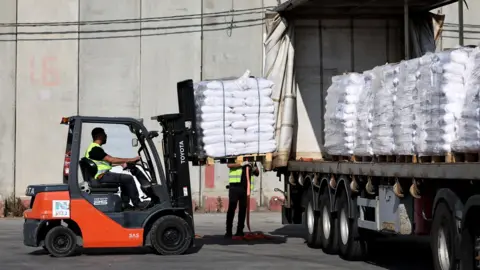 EPA
EPAMore than 90 lorry loads of humanitarian aid have been collected by UN teams inside the Gaza Strip, three days after Israel eased an 11-week-long blockade.
The aid, which included flour, baby food and medical equipment, was picked up from the Kerem Shalom crossing on Wednesday night and taken to warehouses for distribution. Pictures showed a bakery producing bread with some of the flour.
The UN said the delays were due to insecurity along the single access route which the Israeli military had approved.
Israeli authorities said they allowed an additional 100 lorry loads through Kerem Shalom on Wednesday. However, the UN said it was “nowhere near enough to meet the vast needs in Gaza”.
Humanitarian organisations have warned of acute levels of hunger among the 2.1 million population, amid significant shortages of basic foods and skyrocketing prices.
Palestinian Authority Health Minister Majed Abu Ramadan, who is based in the occupied West Bank, told reporters in Geneva on Thursday that 29 children and elderly people had died from “starvation-related” causes in the last couple of days, according to Reuters news agency.
An assessment by the UN-backed Integrated Food Security Phase Classification (IPC) has also said that half a million people face starvation in the coming months.
On Wednesday night, a UN spokesperson said its teams had “collected around 90 truckloads of goods from the Kerem Shalom crossing and dispatched them into Gaza”.
A video shared with the BBC showed the lorries with aid collected from Kerem Shalom driving in a convoy along a road in southern Gaza.
Other footage showed bags of flour being unloaded at a bakery and hundreds of pita breads rolling out of its ovens on conveyor belts.
Amjad al-Shawa, director of the Palestinian Non-Governmental Organisations Network in Gaza, said bakeries backed by the UN’s World Food Programme (WFP) would produce bread that would be handed out by the agency’s staff.
“The idea is to try and reach the most needy families, those who are desperate, as it is just the start,” he told Reuters.
The International Committee of the Red Cross (ICRC) said it had brought in one lorry load of medical supplies for a field hospital in the southern city of Rafah, but that more was needed.
“A trickle of trucks is woefully inadequate. Only the rapid, unimpeded, and sustained flow of aid can begin to address the full scope of needs on the ground,” it said.
 Reuters
ReutersBefore the operation, senior WFP official Antoine Renard told the BBC that the problems with collecting the aid arose because the Israeli military wanted lorries to move along a route in Gaza which aid agencies considered to be dangerous. The route, he said, could leave them at risk of attack by desperately hungry civilians and armed criminal gangs.
“At market prices in Gaza right now, each truck full of flour is worth around $400,000 (£298,000),” Mr Renard explained.
He added that the solution would be “hundreds of trucks daily” travelling along a safe route to warehouses, noting “the less we provide, the greater the risk and more anxiety created” among the population.
Mr Renard said aid agencies on the Gaza side did not employ armed guards to accompany their cargoes because it was considered too dangerous, so a lengthy ceasefire and an extension of the current five-day window for the transfer of food was urgently needed.
Israel stopped all deliveries of aid and commercial supplies to Gaza on 2 March and resumed its military offensive two weeks later, ending a two-month ceasefire with Hamas.
It said the steps were meant to put pressure on the armed group to release the 58 hostages still held in Gaza, up to 23 of whom are believed to be alive.
Israel also insisted there was no shortage of aid and accused Hamas of stealing supplies to give to its fighters or sell to raise money – an allegation the group denied.
The UN also denied that aid had been diverted and said Israel was obliged under international humanitarian law to ensure food and medicine reached Gaza’s population.
On Wednesday, Israel’s Prime Minister Benjamin Netanyahu said he was allowing a limited amount of food into Gaza so that the Israeli military could continue its newly expanded ground offensive and take full control of the Palestinian territory.
“At the end of this manoeuvre, all of the Gaza Strip will be under Israeli security control and Hamas will be completely defeated,” he told a news conference.
“In order for us to keep our operational freedom of action, and to allow our best friends to continue to support us, we need to prevent a humanitarian crisis.”
Netanyahu also said the controversial US-Israeli plan for aid in Gaza – which would bypass existing UN facilities and use a private company to distribute food from hubs in southern and central Gaza protected by security contractors and Israeli troops – would give Israel “another tool to win the war”.
 Reuters
ReutersUN and other agencies have said they will not co-operate with the plan, saying it contradicts fundamental humanitarian principles and appears to “weaponise aid”.
The WFP has also warned it will force 2.1 million people to travel long distances for food.
“This plan is not a solution, it’s a political decision,” Mr Renard said. “The food should go to the people, not the people to the food.”
Meanwhile, Israeli bombardment and ground operations are continuing across Gaza, with the Hamas-run health ministry reporting on Thursday that 107 people were killed over the previous 24 hours.
At least 52 people have been killed since dawn on Thursday, according to the Hamas-run Civil Defence agency. Palestinian media reported that they included 16 people, most of them members of one extended family, who died when a home was hit in Jabalia, in northern Gaza.
The Israeli military issued evacuation orders for Jabalia and 13 other northern neighbourhoods on Thursday, warning residents that it was “operating with intense force in your areas, as terrorist organisations continue their activities and operations”.
According to the UN, about 81% of the territory is now either subject to Israeli evacuation orders or located in militarized “no-go” zones.
Almost 600,000 people are estimated to have been displaced again since March, including 161,000 who have been forced to flee in the past week.
Israel launched a military campaign in Gaza in response Hamas’s cross-border attack on 7 October 2023, in which about 1,200 people were killed and 251 others were taken hostage.
At least 53,762 people, including 16,500 children, have been killed in Gaza since then, according to the territory’s health ministry.
Check out our Latest News and Follow us at Facebook
Original Source

